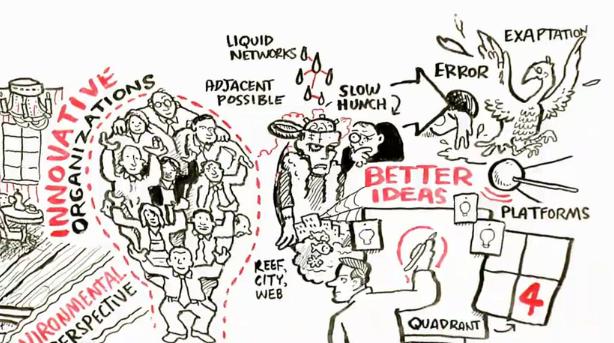
where good ideas come from
What is sure about big innovating ideas is that in spite of fact that they seem to happen in flashes, they definitively don't. Innovations need slow hunches, favourable environment, ecounters and others ideas to emerge and stabilize.
"The history of cultural progress," Johnson writes in his essay Where good ideas come from, "is, almost without exception, a story of one door leading to another door, exploring the palace one room at a time".
At the core of his alternative history is the notion of the "adjacent possible" coined by the biologist Stuart Kauffman. And if we want to expand the possibilities to bump into our adjacent possible we have to expand the range of our possible next moves. Creativity never emerges in isolation; it is nurtured by argument and conversation, and needs to borrow, repurpose and recombine related and even rival ideas. That's why Europe's 17th-century coffee-houses or the internet can be seen as favourable environments as they gather together people from different origins or cultural background.
Enjoy an animated video about Steven Johnson's essay
and his Ted Talk

 CONNECT
CONNECT

